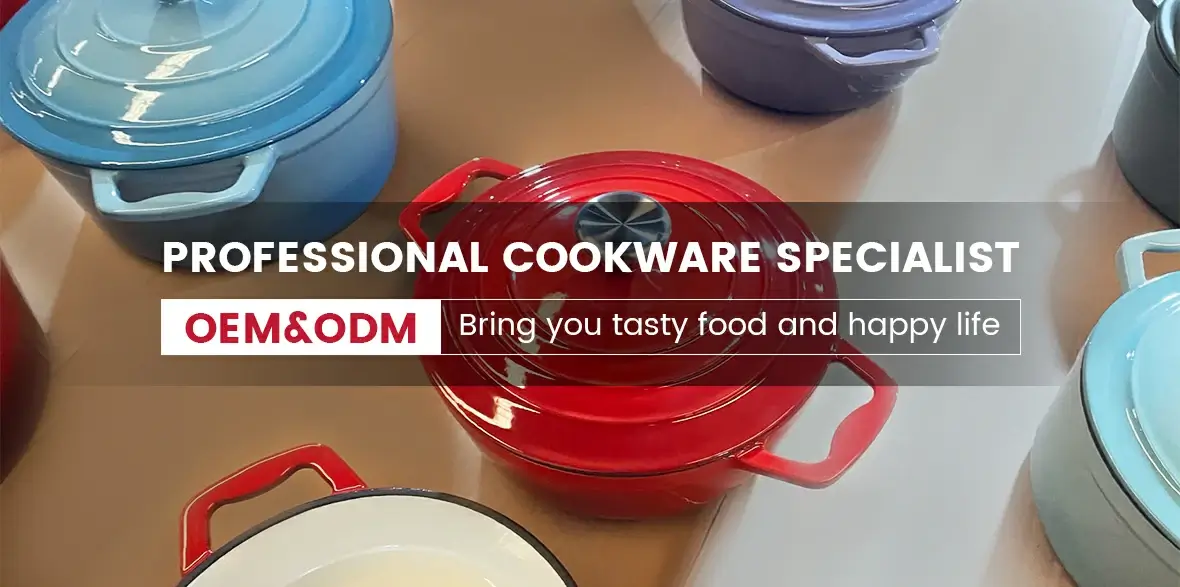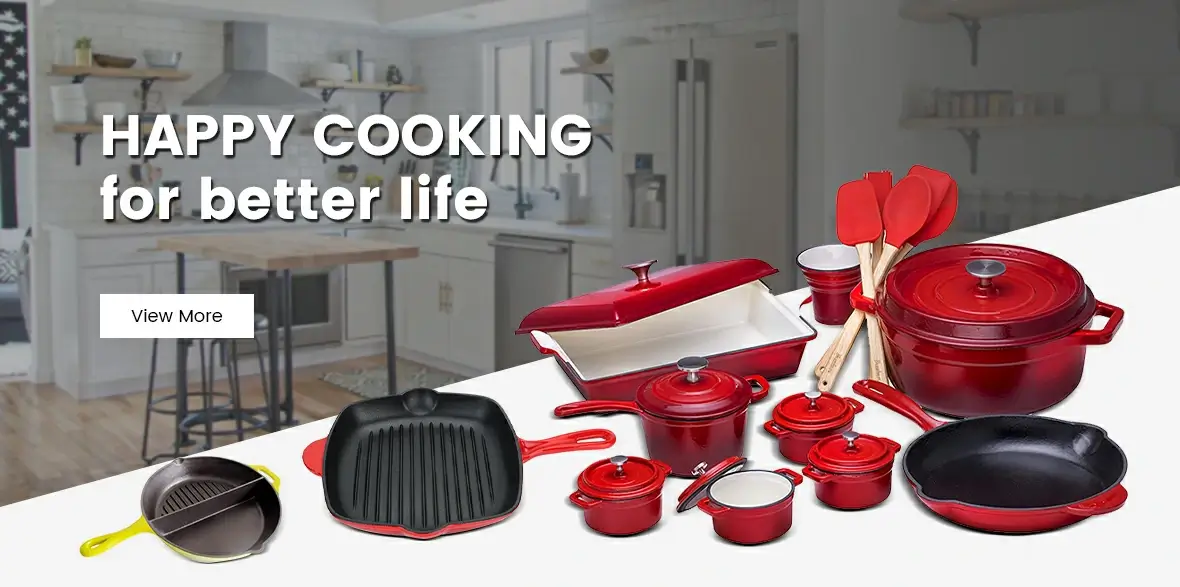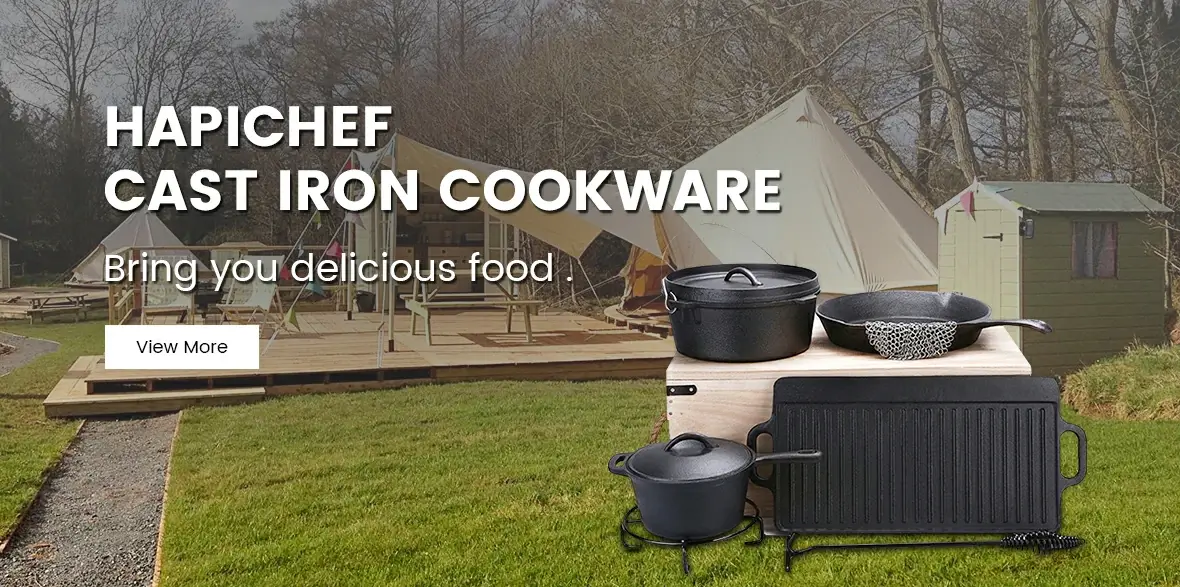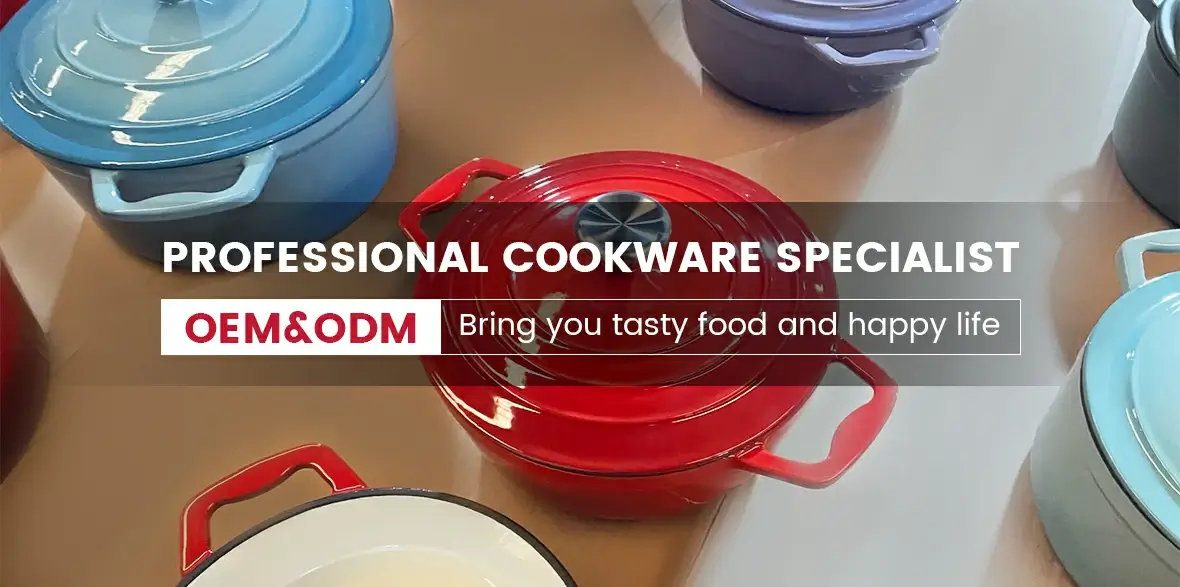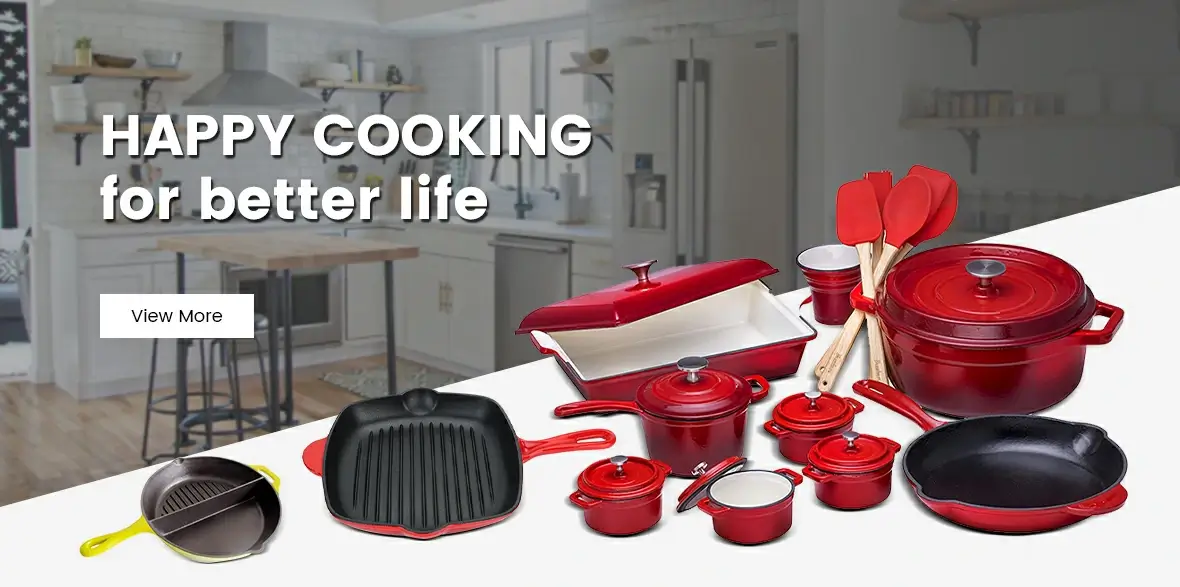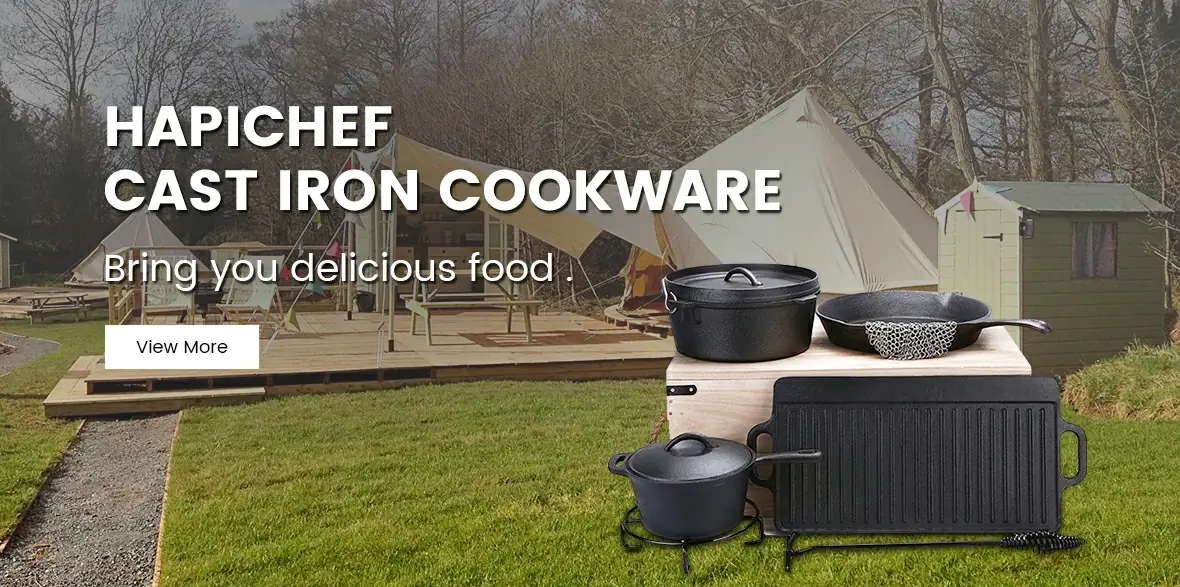Cast Iron Dutch Ovens
A good quality cast iron Dutch oven is an indispensable tool in any kitchen, offering a multitude of advantages that make it a favorite among home cooks and professional chefs alike. One of the most significant benefits of a cast iron Dutch oven is its superior heat retention and even heat distribution. Unlike other materials, cast iron absorbs and holds heat exceptionally well, ensuring that your food cooks evenly and stays warm long after it’s removed from the stove or oven. This makes it ideal for slow-cooking recipes like stews, braises, and roasts, where maintaining a consistent temperature is crucial for achieving tender, flavorful results.
Durability is another standout feature of a high-quality cast iron Dutch oven. Built to last for generations, these ovens are incredibly robust and resistant to wear and tear. They can withstand high temperatures, making them suitable for a variety of cooking methods, from stovetop searing to baking in the oven. This versatility means you can use a cast iron Dutch oven for everything from making bread to deep frying, all in one pot. Additionally, the natural non-stick surface that develops over time with proper seasoning makes cooking and cleaning easier, while also enhancing the flavor of your dishes.
Moreover, a well-crafted cast iron Dutch oven is not just functional but also aesthetically pleasing. With its classic design and sturdy construction, it can easily transition from the kitchen to the dining table, making it perfect for serving family-style meals. The lid is often tight-fitting, which helps to lock in moisture and flavors, creating richer, more succulent dishes.
In essence, investing in a good quality cast iron Dutch oven means investing in a versatile, durable, and efficient piece of cookware that will elevate your cooking and stand the test of time.
-
 Camping Cast Iron Flat Bottom Dutch Oven
Camping Cast Iron Flat Bottom Dutch Oven 4.5qt 8qt Pre-Seasoned Cast Iron Dutch Oven with Lid and Legs
4.5qt 8qt Pre-Seasoned Cast Iron Dutch Oven with Lid and Legs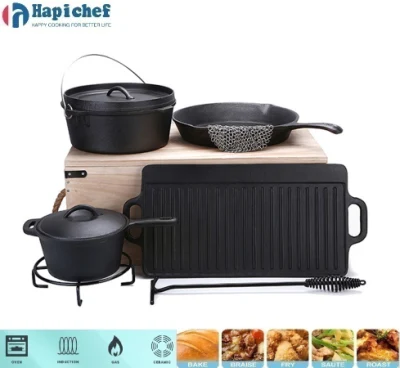 7PCS Cast Iron Camping Cookware Set
7PCS Cast Iron Camping Cookware SetBenefits of Cast Iron Dutch Oven
When it comes to versatile cooking tools, few can rival the cast iron Dutch oven. With its timeless design and exceptional heat retention, the benefits of cast iron Dutch ovens are numerous and varied, making them a must-have in every kitchen.
One of the most significant benefits of cast iron Dutch ovens is their durability. These heavy-duty pots can withstand high temperatures and are virtually indestructible, making them ideal for both stovetop and oven use. Whether you’re sautéing, roasting, or baking, a cast iron Dutch oven can handle it all.
Another advantage is their excellent heat distribution. Unlike other materials, cast iron evenly distributes heat, ensuring that your food cooks uniformly and reduces the risk of hot spots. This feature is particularly beneficial for slow-cooking recipes, creating tender and flavorful dishes that will impress your family and friends.
Additionally, cooking with cast iron can add trace amounts of iron to your meals, providing an extra health benefit. It's an excellent cooking option for those looking to boost their iron intake naturally, especially for individuals following plant-based diets.
Cleaning and maintaining a cast iron Dutch oven is also straightforward. With proper care, a well-seasoned Dutch oven can develop a natural non-stick surface, making cooking and cleanup a breeze.
In summary, the benefits of cast iron Dutch ovens are clear: unparalleled durability, even heat distribution, health benefits, and ease of maintenance. Investing in one of these culinary powerhouses will elevate your cooking experience and expand your recipe repertoire, making every meal a delight.
What Are Cast Iron Dutch Ovens Used For
Cast iron Dutch ovens have earned their place in kitchens around the world, and for good reason. These versatile cooking vessels are not just aesthetically pleasing; they excel in various culinary applications. So, what are cast iron Dutch ovens used for? Let’s delve into their remarkable capabilities.
First and foremost, these heavy-duty pots are celebrated for their incredible heat retention and distribution. Whether you’re simmering a hearty stew, braising meat to tender perfection, or baking artisan bread, cast iron Dutch ovens provide consistent temperatures that result in delicious meals. Their tight-fitting lids create a self-basting environment, allowing flavors to meld beautifully.
Additionally, cast iron Dutch ovens are incredibly adaptable. They can seamlessly transition from stovetop to oven, making them perfect for recipes that require both methods of cooking. Imagine starting your chili on the stove and finishing it off in the oven — this pot can handle it all!
Moreover, these durable ovens are ideal for slow cooking and roasting. The heavy material ensures that your food cooks evenly, while the large capacity is perfect for family gatherings or meal prepping for the week ahead.
In conclusion, if you’ve ever wondered, “What are cast iron Dutch ovens used for?” the answer is as vast as your culinary creativity. From soups and stews to baking and roasting, these kitchen staples are essential for any cooking enthusiast. Invest in a cast iron Dutch oven today and experience the magic for yourself!
Aluminum Vs Cast Iron Dutch Oven
When it comes to versatile and durable cooking vessels, the Cast Iron Dutch Oven stands out as a kitchen legend. However, many home cooks are now considering aluminum Dutch ovens as a lighter alternative. Let's explore the differences between these two popular options to help you decide which is best for your culinary adventures.
First, let’s talk about the Cast Iron Dutch Oven, a staple in many kitchens. Known for its excellent heat retention and even cooking, a cast iron version is perfect for slow cooking, roasting, and baking. Its ability to maintain high temperatures makes it ideal for dishes like stews and braises, which require long cooking times. Plus, with proper seasoning, a Cast Iron Dutch Oven can develop a natural non-stick surface, enhancing the flavor of your meals.
On the other hand, aluminum Dutch ovens boast their own set of advantages. Lighter and often less expensive than their cast iron counterparts, aluminum options heat up more quickly, making them great for stir-fries and fast-paced cooking. They are also easier to handle, especially when transferring from stovetop to oven. However, the heat distribution isn’t as consistent as in a Cast Iron Dutch Oven, which might affect the outcome of longer-cooked recipes.
Another notable difference is maintenance. While a Cast Iron Dutch Oven requires a bit more love and care—requiring seasoning to prevent rust—aluminum pots usually require less upkeep and can often be cleaned easily in a dishwasher.
Ultimately, the choice between aluminum and Cast Iron Dutch Ovens boils down to your cooking style and preferences. If you value durability and flavor fusion, the Cast Iron Dutch Oven is your best bet. However, if convenience and lightweight handling are your priorities, consider giving aluminum a try.
Cast Iron Dutch Oven Vs Stainless Steel
When it comes to versatile cookware, two titans often enter the ring: the quality cast iron Dutch oven and Stainless Steel pots. Each has its devoted followers, and understanding their unique benefits can help you determine which one suits your cooking style best.
The Cast Iron Dutch Oven is a culinary heavyweight, celebrated for its exceptional heat retention and even cooking. Whether simmering a hearty stew or baking a rustic bread, this heavy-duty pot excels in maintaining temperature, allowing flavors to meld beautifully. Moreover, the natural non-stick surface that develops with proper seasoning is a surefire way to elevate your culinary creations. From stovetop to oven, a Cast Iron Dutch Oven promises durability that can last a lifetime, often becoming a family heirloom.
On the other hand, stainless steel cookware shines on its own right. Renowned for its sleek appearance and resistance to rust, it is a favorite among professional chefs. Unlike the Cast Iron Dutch Oven, stainless steel does not react with acidic ingredients, making it the ideal choice for dishes that include tomatoes or vinegar. Its lightweight nature and ability to heat quickly are also significant advantages, especially for those who appreciate fast cooking.
However, while the Cast Iron Dutch Oven may require a bit of maintenance and seasoning to prevent rust, many find that the rewards are well worth the effort. The enhancement of flavors through slow cooking and browning is an experience that stainless steel simply cannot replicate. In contrast, stainless steel is easier to clean and often dishwasher-safe, appealing to those who prioritize convenience.
In conclusion, whether you select a good quality cast iron Dutch oven for its culinary mastery or opt for Stainless Steel for its practicality, both serve as essential tools in your kitchen. The key is understanding your cooking habits to decide which will become your go-to pot in your culinary adventures. Happy cooking!
Cast Iron Dutch Oven FAQ
Q1: What is a cast iron Dutch oven, and how is it different from other cookware?
A1: A cast iron Dutch oven is a versatile cooking pot made from cast iron, known for its excellent heat retention and even heat distribution. Unlike other materials, cast iron can withstand high temperatures and is perfect for both stovetop cooking and baking in the oven. Its ability to maintain heat makes it ideal for slow-cooking, braising, and even baking bread, which can lead to delicious, well-cooked meals.Q2: Can I use my cast iron Dutch oven on all cooktops, including induction?
A2: Yes, our cast iron Dutch oven is compatible with all cooking surfaces, including induction, gas, electric, and even campfires. The solid cast iron construction provides the perfect stability on any surface, ensuring you can enjoy cooking your favorite meals anywhere, whether indoors or outdoors.Q3: How do I properly care for my cast iron Dutch oven?
A3: To maintain your cast iron Dutch oven, it's essential to season it regularly. After each use, clean it with warm water and a soft sponge—avoid harsh detergents. Dry it thoroughly and apply a thin layer of vegetable oil to the interior. This will prevent rust and enhance its non-stick surface, ensuring that your Dutch oven lasts for years while delivering delicious meals.Q4: Is this Dutch oven suitable for cooking acidic foods like tomatoes or citrus?
A4: Yes, a well-seasoned cast iron Dutch oven can handle acidic foods, including tomatoes and citrus. However, if your Dutch oven is not seasoned properly, the acids may react with the iron, affecting the flavor of your dish and the pot itself. With proper maintenance and seasoning, you can confidently cook all types of ingredients without worry.Q5: What sizes are available for the cast iron Dutch oven?
A5: Our cast iron Dutch ovens come in a variety of sizes, ranging from 2-quart to 8-quart options, allowing you to choose the perfect one for your cooking needs. Whether you're preparing a cozy meal for two or a large gathering, there's a size that fits your needs perfectly, ensuring delicious results every time.Q6: Can the cast iron Dutch oven be used in the oven, and what is the maximum temperature it can withstand?
A6:Absolutely! The cast iron Dutch oven is oven-safe and can withstand temperatures of up to 500°F (260°C). This makes it ideal for baking, braising, and roasting. Whether you’re making a baked casserole or a hearty stew, you can trust that our Dutch oven will perform superbly at high temperatures.Q7: Can the cast iron Dutch oven be used in the oven, and what is the maximum temperature it can withstand?
A7: Absolutely! The cast iron Dutch oven is oven-safe and can withstand temperatures of up to 500°F (260°C). This makes it ideal for baking, braising, and roasting. Whether you’re making a baked casserole or a hearty stew, you can trust that our Dutch oven will perform superbly at high temperatures.Q8: Is a cast iron Dutch oven worth it
A8: A cast iron Dutch oven is often considered worth the investment for its durability, versatility, and heat retention. It's ideal for slow-cooking, braising, baking, and even frying, making it a versatile tool in the kitchen. With proper care, it can last a lifetime and improve with age, developing a natural non-stick surface. While it requires regular seasoning and can be heavy, the benefits of even cooking and long-lasting performance often outweigh these drawbacks. For serious cooks and those who value quality kitchen tools, a cast iron Dutch oven is a worthwhile addition to any cookware collection.Q9: can cast iron Dutch oven be used on stove top?
A9: Yes, a cast iron Dutch oven can be used on the stovetop. Cast iron is known for its excellent heat retention and even cooking, making it ideal for stovetop cooking. It can handle high temperatures, making it suitable for searing, browning, and simmering. When using it on the stove, ensure the burner is the appropriate size to match the Dutch oven to avoid uneven heating. Always use a trivet or oven mitts, as the handles and body of the Dutch oven will become very hot. It's versatile and can transition from the stovetop to the oven for a wide range of cooking methods.

